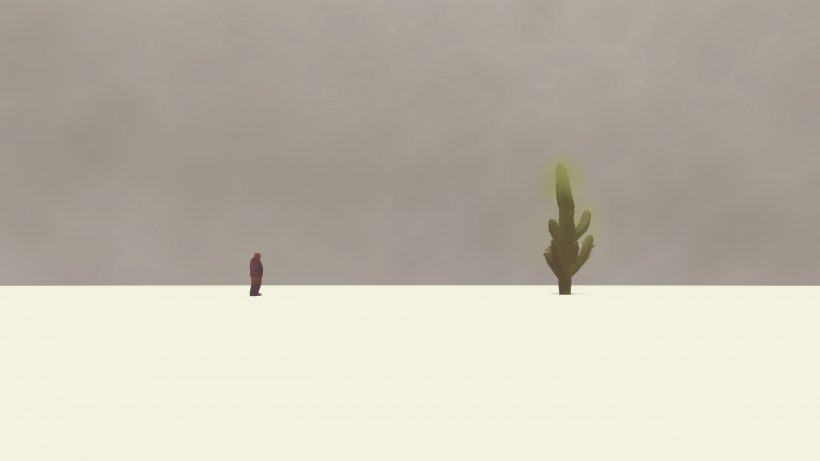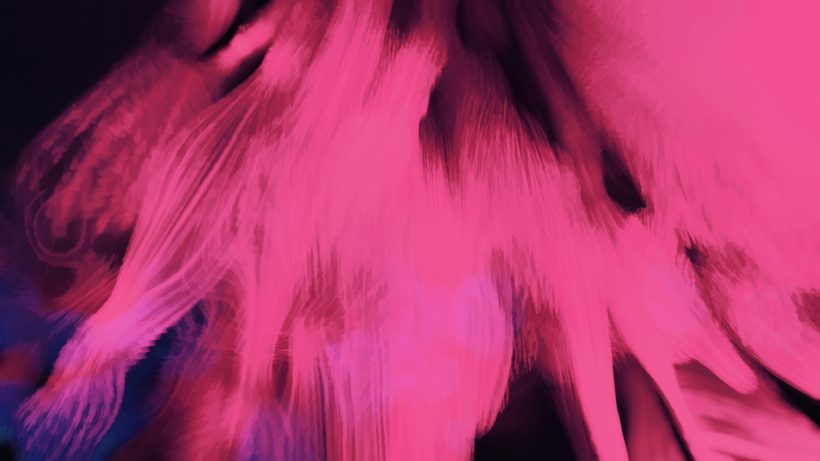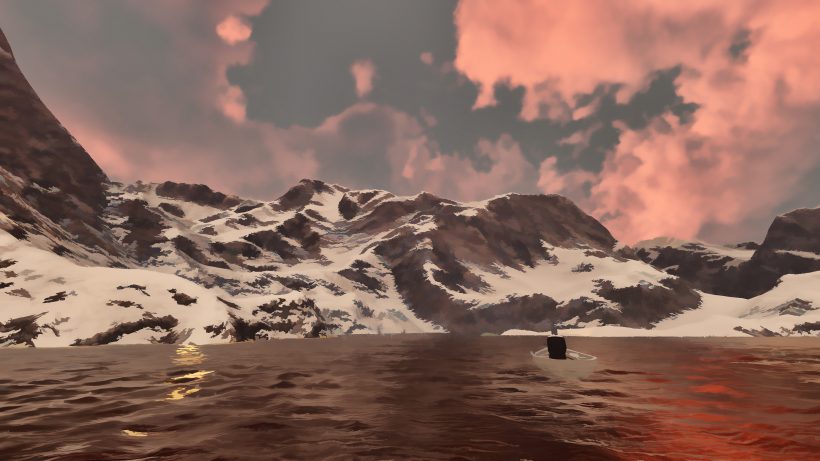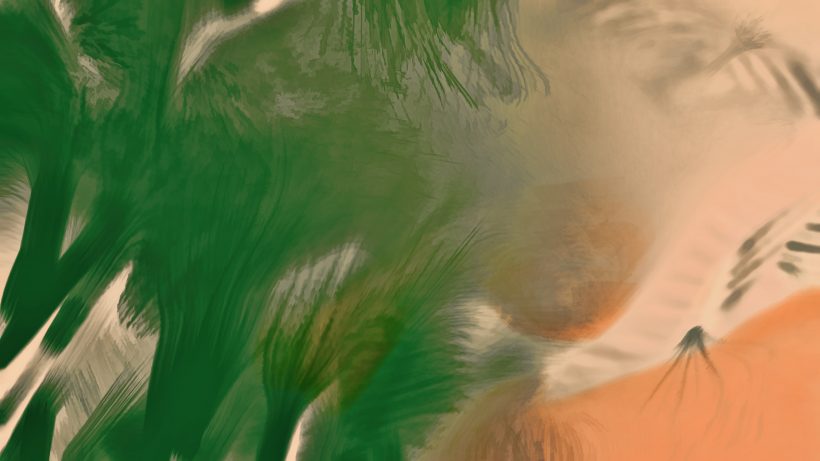We’re thrilled to feature digital artwork from Henry Hu in our Summer issue. We were drawn to the dreamlike landscapes and vibrant colors featured in Henry’s work, and couldn’t be happier to share these pieces with you. In our online edition, we’re fortunate to include “should’ve never,” an animated piece.
Art Editors Cade Leebron and Liz Blackford got in touch with Henry to talk about his work.
Art Editors: This set of images is so visually dynamic and diverse. Can you talk a bit about your influences, and the tension between different types of imagery or influence in your work?
Henry Hu: I don’t particularly look at any visual arts for references, inspirations or whatnot. A lot of the time I just give myself the freedom to fully explore, to experiment, and find whatever that feels right for me at the time. I always knew I want to release my artworks as individual series, presenting them as a full body of work in a specific order. It is similar to how musicians put together an album—each track interconnects, flows to another. I listen a great deal music records from front to back when I am working, sometimes they do give me certain ideas, rhythms as to how I should sequence the pieces. Albums from contemporary musicians, just to name a few—James Blake, Julie Byrne, Kendrick Lamar, Frank Ocean, Vince Staples and Annie Clark have influenced my work. It is difficult to actually pinpoint how exactly the music help shaped the artworks I am doing visually, but I suppose there is just a sense of subtlety in the music that resonates with me. Everything feels organic from the get-go.

AE: Two of the landscapes seem to be from your series ‘walks of life,’ and are titled ‘guilt’ and ‘accept.’ Could you talk more about this series?
HH: Being one of the earlier series I worked on, ‘walks of life’ is all about opening up and self reflection. The collection basically documents fragments of memories growing up, or just living life in general. They are not necessarily my own personal stories, but as I got more pessimistic in life, I feel as if I can identify the actual experience of human existence and inter-relationships with more empathy.

AE: We noticed on your website that you also do computer animation. Does the work you submitted have any relation to you work in animation? If so, could you explain the relationship of particular images to your animated works?
HH: Yes I did this little short story motion visual called ‘should’ve never’ a while back for fun. It is sort of like a spin off from the ‘walks of life’ art series. The animation shows a specific part of the story and the art series just carries out the rest, connects to the bigger picture.
Obviously I adore visual arts as an art form, but at the end of the day I would love to be writing scripts and making films. I have always been attracted to utilizing motion pictures as an art form to explore the subjects that interest me, in my case theology and philosophy. I am very clear as to the exact type of films I wish to work on – will just have to wait and see how everything turns out.
Currently I am working on this art series titled ‘base(s)(d)’ which I am very excited about. After that I will probably take a break from visual arts and get started on a film script. With ‘base(s)(d)’, I found peace and comfort in my work. I feel I might have reached the form I would like my artworks to finally evolved to be. The series is big, is expansive in terms of the number of pieces, the variety of styles, and is no doubt my most ambitious work to date.

AE: You’ve said that your art has “a focus on storytelling,” which we love. What was the process of crafting the story told by this set of images?
HH: ‘Where The Rainbow Ends’ was my first art series. It largely built off the ‘rainbow’ hidden theme Stanley Kubrick included in Eyes Wide Shut. It plays around with subjects such as elite occults, mind controlled slaveries, illusions, dreams, and more. I was very fascinated about all of these at the time—read a ton of articles, theories on them. Eventually I just got super inspired and started working on some artworks.

AE: We also saw that you’ve published zines! Could you talk to us a bit about those, and how your zines are related to or differ from your other work?
HH: I came out with ‘titles 01’ at the very beginning of the year. The zine features a majority of my artworks, graphics released before 2017. There are also a good chunk of unreleased, ‘b-sides’ materials in it. A lot of these artworks didn’t make the final cut into a series – they just didn’t sit right with me personally. Art is all subjective, so I thought it would be nice to put out some of these pieces since somebody else might enjoy them.
AE: Related to that, as an artist who’s been published in a ton of literary magazines, do you have any thoughts on the ever-evolving world of literary publishing? What roles do you see literary magazines and zines playing in this landscape?
HH: I suppose the most important thing literary magazines provide is the platform for writers and artists to share, to connect. Any kind of attention is temporary, so it does make a huge difference when the audience actually cares about the works being shown, doesn’t matter if it’s print or online.
Hong Kong bred, Sydney based, Henry’s artworks are personal, intentional, with a focus on storytelling. He strives to assemble a full body of work, forming a series piece by piece. Each individual art series usually consist of multiple pieces, grouped by specific concepts or stories. By experimenting with digital tools, visually Henry commits to linking something fresh, alternative yet familiar, and presenting them in traditional forms.
